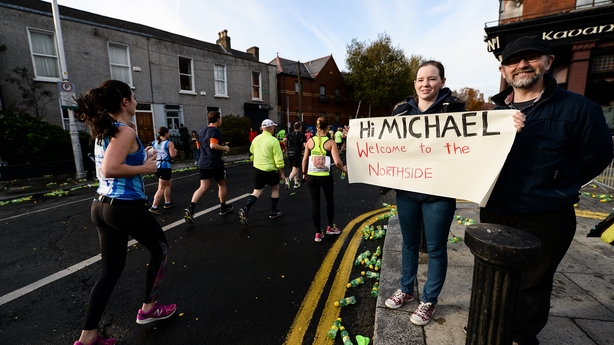We are now at the point of the marathon preparation where things start to taper off and the training changes accordingly.
The quantity is beginning to lessen, which is a welcome for people who have been putting the hours in.
The thing is, you're still out running, and this is where, with more time to think about the race, doubts can start to creep in.
The anxiety comes to the fore when you realise it is only two weeks away. The element of doubt creeps in with that voice inside your head.
The mind now starts to go, 's**t, have I done enough work?’ and this can be tricky to manage.
It was no different for me when I competed in the 400 metres.
What I used to do back then seemed bizarre to some people, but it worked for me.

I would write down all the negative thoughts and ideas that swirled through my head leading up to a race. It could be anything from ‘I haven’t done the right training’ to ‘I’m going to blow up before the finish line’.
Before I travelled to my race, I would go into the garden and burn the piece of paper.
I appreciate this can sound a little extreme, but if you simply ignore the negativity, it will only fester and spin around in your head.
As well as getting rid of the negative thoughts, I wrote down the sessions that went well, the runs I felt good in.
It was a confidence boost and the other advantage to this type of journaling was that when I saw my concerns in black and white, it became much easier to dismiss some of them out of hand as simply irrational.
It’s a practice I still use and it might prove useful for some people ahead of the marathon. You don’t need to necessarily burn the piece of paper afterwards, simply ripping up and binning them will do, but recording your concerns, along with reinforcing what you have done to this point can be good for peace of mind.
Strava is a popular app among the running community. Go back over what you have done this year. Remind yourself of the body of work that is under your belt. Forget about comparing yourself with others, that will just melt your head, focus on yourself!
There are no two ways about it, the marathon is going to hurt, so it’s about what you do in those moments. How do you talk yourself out of not giving up? How do you talk yourself out of walking for a little bit?
Try not to think of the marathon as 42km or 26 miles. Take it in segments
You need to start embracing the fact that you are going to hurt. Begin to visualise when you are going up Milltown hill, up Roebuck hill or like me last year, the grind up to Walkinstown roundabout! What are you going to do when the voice tells you to give up, what's your plan?
Even the first finishers on the day have to battle negative thoughts.
I tell people to break the run down into more manageable chunks.
I applied the same principle to my 400 professional running. I never saw it as a 400 metre race. It was 50m, 100m, 200m, 250m, 300m, 350m and 400m. Each segment I had a different focus for.
Try not to think of the marathon as 42km or 26 miles. Take it in segments. Getting to Phoenix Park. Getting to Chapelizod. Getting to Kimmage etc. Getting to your first gel.
If you have support en route, where will they be? Have them in your mind as a marker to aim for.
Even small things like ‘smile a mile’ (allow yourself a smile at each marker) or when you are struggling and the voice comes in, count 10 strides on your left, 10 strides on your left. It provides a distraction and hopefully you might get back into some sort of a groove again.

Anything you can do to relax the mind and body can make a big difference in the second half of the race.
My target is to break three hours, but while I have put in more work this year and I’m in better shape, that has also increased my own expectations.
As a result, I’m definitely feeling more nervous than my maiden marathon attempt last year.
The more you put in, the more you expect, so this anxiousness is only natural. You don’t want to fail. The thought process is ‘This has to work, I have invested so much of myself, family and time into this’.
You need to be confident and calm, rather than forcing things. Let the process take over.
It's about being aware of the negative thoughts, and then managing them
And you can’t focus on the past, something that came up in conversation with my coach Emmett Dunleavy recently. Last year really hurt when I hit 16 miles, the last 10 miles proving to be a real slog.
People will naturally think of previous marathon experience, but Emmett and I discussed that I need to park last year.
What happened at Clonskeagh when I had to walk is not relevant, I’m different this year and I have put in more work. Last year is gone and is simply not comparable to where you are this year.
When doubts have crept back in, I have reflected back on all the quality runs and sessions under my belt.
The main takeaway I would say is that don’t ignore the doubts. Everyone has them. It’s about being aware of the negative thoughts, and then managing them.


